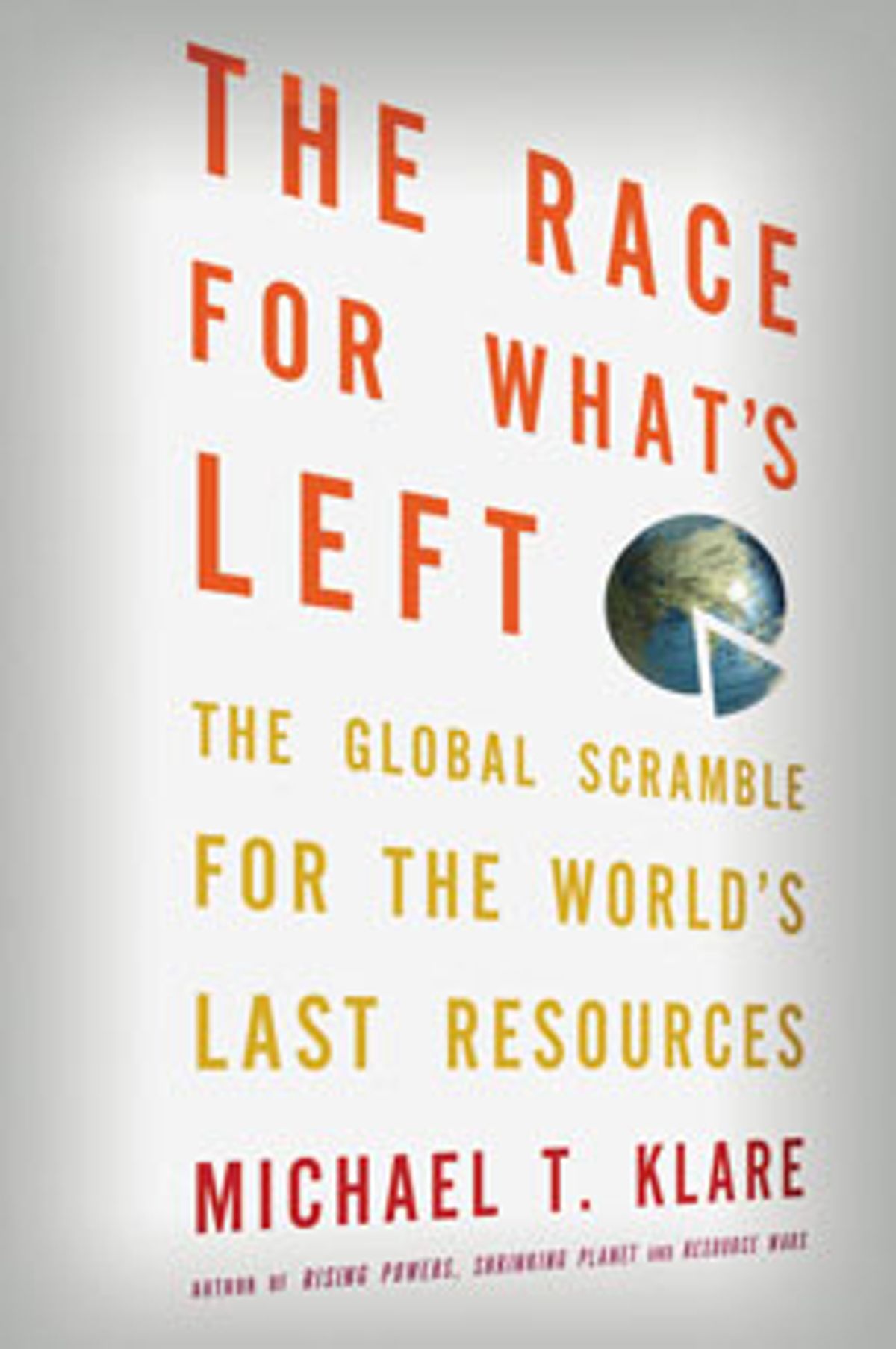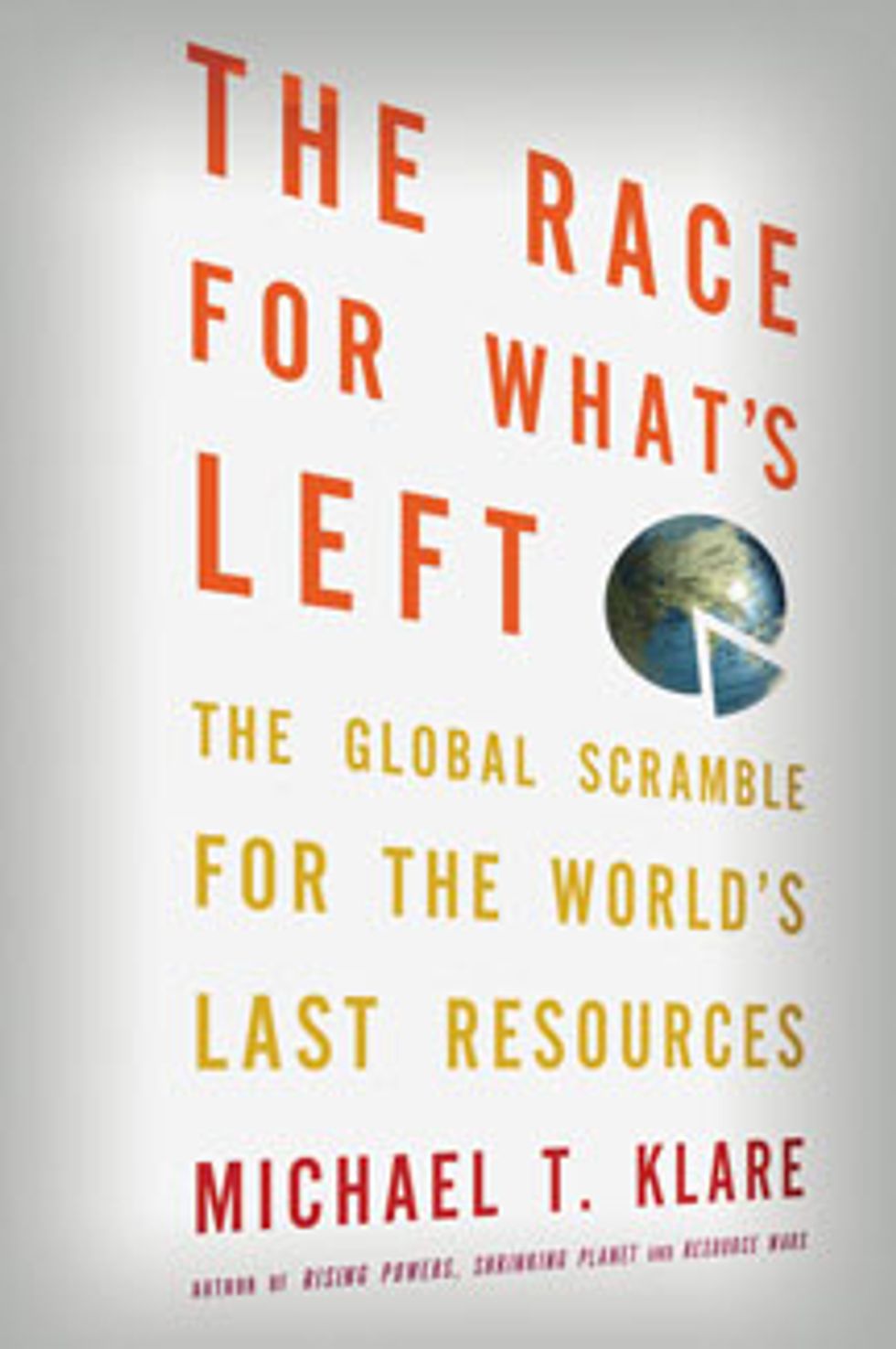Reviewed by William Sweet
By Michael T. Klare; Metropolitan Books, 2012; 320 pp.; US $27; ISBN978-0-8050-9126-7
The Race for What’s Left is the latest in a series of books on energy geopolitics and resource scarcity by Michael Klare. Looking at his most recent books— Rising Powers, Shrinking Planet (2008), Blood and Oil (2004), and Resource Wars (2001)—you might think Klare has already said everything he has to say on these subjects, but you would be wrong. You’d also be wrong to ignore his work, even if you disagree with some of his basic premises.
Klare, who directs the Five College Program in Peace and World Security at Hampshire College, in Amherst, Mass., tends to see heightened competition for depleted resources as the source of all conflict, and his formulations sometimes have an apocalyptic ring. Today’s “race for what’s left is…a drive without precedent,” he writes here. “The race we are in today is the last of its kind that we are likely to undertake.”
You may think that humankind is in more than one kind of race right now, and that many more are to come; nonetheless, Klare does a nice job detailing what’s at stake in this particular one. His maps and tables are especially useful, being both well conceived and well executed. They include a list of the 10 largest oil fields, with peak and current production for each, registering a sharp depletion in all of them; production of selected commodities for the years 1959, 1975, and 2000, showing dramatic increases; and the major rare earth elements and their major applications, highlighting how and why they are critically needed.
If you want to know just where the major newly discovered oil fields are in the Arctic, off Greenland, or off Brazil, this is the place to look. Likewise, if you want to know how big such fields may be: Brazil’s Tupi and neighboring fields, about 100 billion barrels, the biggest untapped reservoir found since North Sea oil in the 1970s; all the Arctic oil and gas, equivalent to perhaps 219 billion barrels of oil; Venezuela’s Orinoco Belt, 1 trillion barrels of heavy and extraheavy oil; Canada’s Athabasca tar sands, 100 billion barrels; Alaska’s controversial Arctic National Wildlife Refuge, a mere 10.4 billion barrels.
Need a little tutorial or reminder about the basics, such as the difference between oil shale and shale oil? “Oil shale—that is, relatively shallow layers of solid kerogen-bearing rock—is not to be confused with what is known as shale oil: mature, liquid petroleum trapped in deeper shale formations.”
Besides developments in oil and gas, The Race for What’s Left takes a sensible look at other potential shortages, including arable land. It’s no secret that countries like China, India, South Korea, and Saudi Arabia have been investing heavily in African cropland. Another important destination for such capital, however, is the former Soviet realm. Klare cites one estimate that “as much as 60 percent of Russian black earth,” some of the richest arable land in the world, “is currently idle.”
Russia’s position in the Arctic, where a rush on hydrocarbons involving Canada, Denmark, Norway, and the United States is taking place, also receives a much-needed examination. The sectors claimed by Moscow are thought to include more than half the region’s recoverable oil and gas reserves, and the U.S. Geological Survey estimates total Arctic oil and gas reserves as more than 20 percent of Earth’s remaining potential.
Russia is already the leading producer of natural gas, and so, with the addition of the Arctic reserves, its preeminence “is likely to be accentuated and extended,” says Klare, in this case perhaps with some understatement.
For more book reviews, see the full list.
About the Author
William Sweet, an IEEE Spectrum contributing editor, writes frequently about energy, climate, and geopolitics. His most recent work includes “Energy Geopolitics: Quandaries Intensify,” which appeared in the 2012 edition of the Foreign Policy Association’s Great Decisions, and Situating Putin: Why He’s Not Going Away and How That Matters, an e-book just published.


